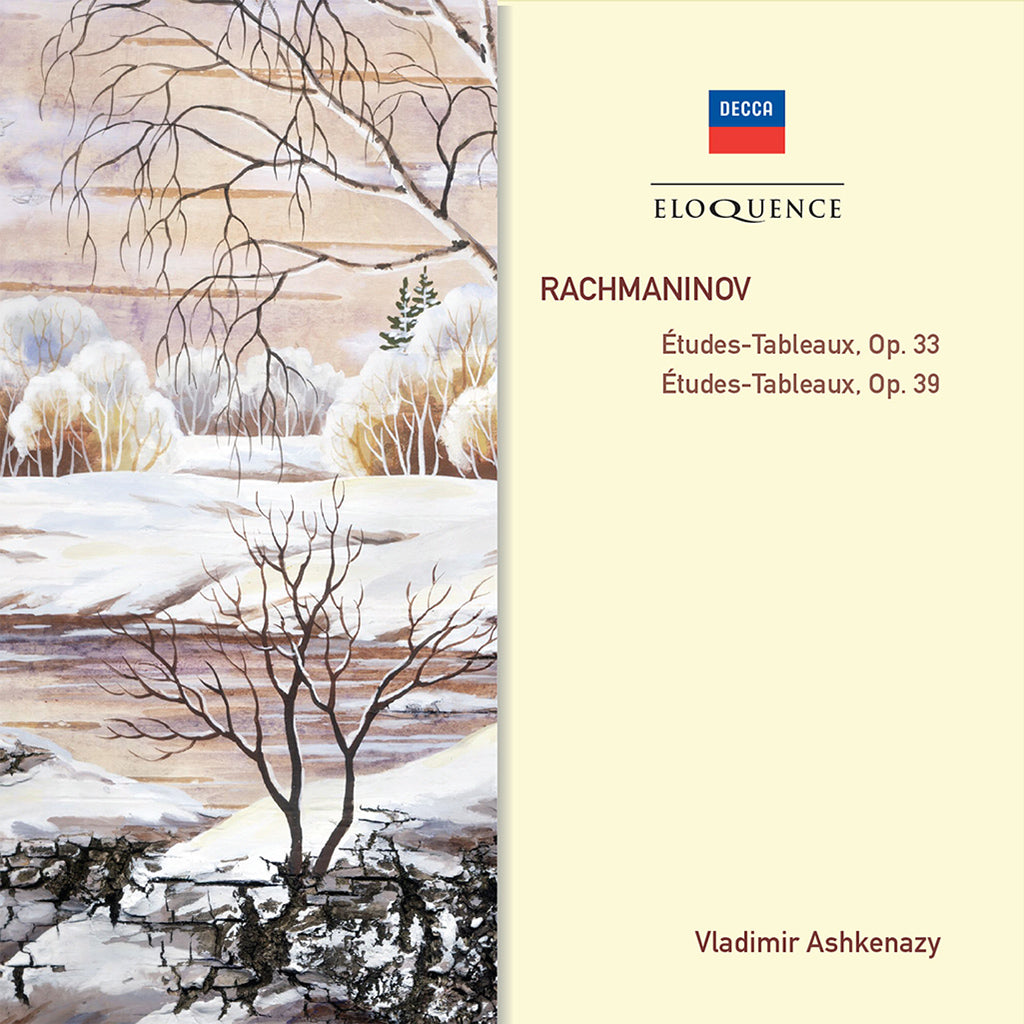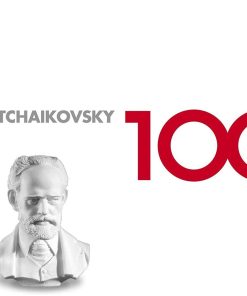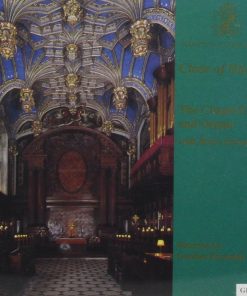RACHMANINOV: Etudes-tableaux, Opp. 33 & 39 – Vladimir Ashkenazy DECCA
$ 5,99 $ 3,59

The seventeen ‘Études-tableaux’ date from the last decade of Rachmaninov’s life in Russia. By this time he had completed Preludes in each of the major and minor keys and was ready to move in a slightly different direction. By qualifying the term with the word ‘tableau’, Rachmaninov seemed to be suggesting the introduction of a visual or even programmatic element into these complex ‘studies’.
Vladimir Ashkenazy recorded the Op. 33 set of ‘Études-tableaux’ four years apart, taping Nos. 2, 3, 5 and 6 in September 1977 and Nos. 1, 4, 7 and 8 in April 1981. He recorded the Op. 39 set twice – first in February 1973 and then in June 1985/September 1986. The 1985-86 recordings were released internationally on CD but this is the first international release of the earlier 1973 recordings.

‘it is doubtful if this centenary year will produce a better recital of Rachmaninov’s solo works, or one that more usefully fills gaps in the catalogue … [Ashkenazy] is exactly the sort of pianist for whom Rachmaninov composed and, though his virtuosity can be taken for granted, the sustained eloquence of his playing throughout is remarkable, as is the feeling of complete naturalness he maintains in the technically most demanding and musically most intense passages. Add to this a lifelike recording […] and you have […] an issue which recommends itself’ [Op. 39] Gramophone
‘everything is made to sound natural, inevitable. Hear Ashkenazy’s colouring of the sombre first page of Op. 33 No. 3, his clear differentiation between the contained agitation of No. 2 and the tireless motion of No. 5, or his shaping of the exquisite melody buried in the traceries of No. 7, the loveliest of the set. This is the finest performance of these pieces that I have heard’ [Op. 33] Gramophone

SERGEI RACHMANINOV
Études-tableaux, Op. 33
Études-tableaux, Op. 39 *
Vladimir Ashkenazy, piano
Fast Shipping and Professional Packing
Due to our longstanding partnership with UPS FedEx DHL and other leading international carriers, we are able to provide a range of shipping options. Our warehouse staff are highly trained to pack your goods exactly according to the specifications that we supply. Your goods will undergo a thorough examination and will be safely packaged prior to being sent out. Everyday we deliver hundreds of packages to our customers from all over the world. This is an indication of our dedication to being the largest online retailer worldwide. Warehouses and distribution centers can be located in Europe as well as the USA.
Orders with more than 1 item are assigned processing periods for each item.
Before shipment, all ordered products will be thoroughly inspected. Today, most orders will be shipped within 48 hours. The estimated delivery time is between 3-7 days.
Returns
The stock is constantly changing. It's not entirely managed by us since we are involved with multiple parties such as the factory and our storage. The actual stock can fluctuate at any time. Please understand it may happen that your order will be out of stock when the order is placed.
Our policy is valid for 30 days. If you haven't received your product within 30 days, we're not able to issue either a return or exchange.
You are able to return a product if it is unused and in the same condition when you received it. It must also still remain in the original packaging.

























































